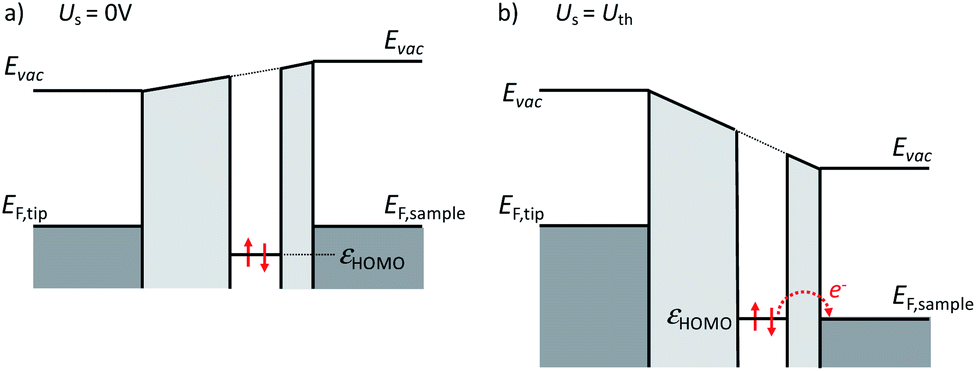
On-surface chemistry is a promising topic in nanoscience and is widely applied for the generation of a multitude of nanostructures and to the local chemical modification of adsorbed molecules in order to tune their properties or create layers with new functionalities. Using an electric field to control chemical reactions is a concept that has been discussed in the early works of Shaik et al.4 and for example successfully applied to the electrostatic catalysis of a Diels–Alder reaction.5 In fact, electrochemistry is based on the modification of the chemical potential by applying a voltage between the two electrodes of an electrochemical cell in order to initiate redox reactions.
Here we address the following question: can a dehydrogenation reaction in vacuum be triggered by an electric field gradient in the absence of electron tunnelling and thus in the zero-current limit? We use an approach that extends the field-induced chemical modification of single molecules by STM to the modification of extended layers. As a prototype molecule, we here use dihydrotetraazapentacene (DHTAP), which belongs to a class of azapentacene precursors that have been widely discussed in literature as candidates for applications as organic semiconductors due to their superior environmental stability as compared to pentacene. Theoretical model and calculations confirmed the chemical reaction and its products.
Reference:
On-surface chemistry using local high electric fields
T. Leoni, T. Lelaidier, A. Thomas, A. Ranguis, O. Siri, C. Attaccalite and C. Becker